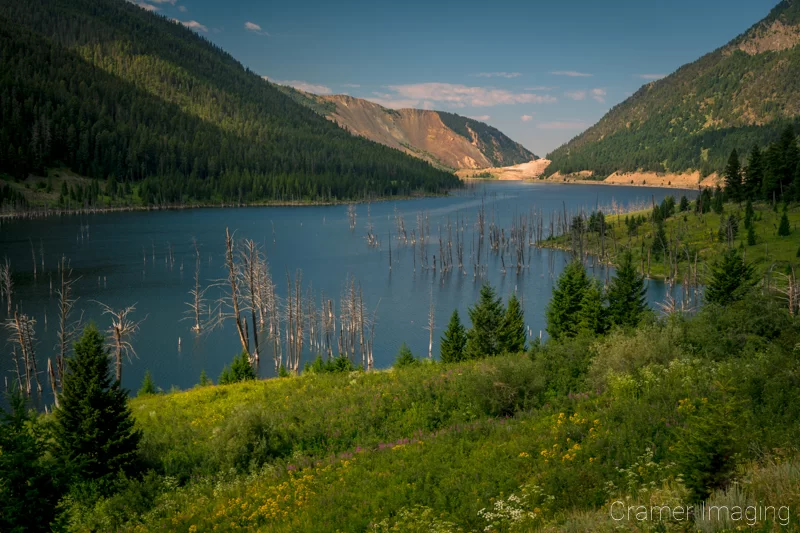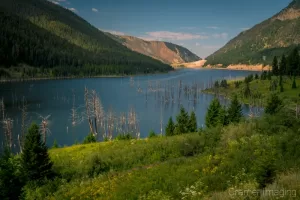
It was a terrible night in 1959 which formed this lake extension to the Hebgon Lake aquifer, a night in which 28 people lost their lives (a true night of horror). An earthquake, measuring 7.5 on the Richter scale, caused a massive landslide. This landslide blocked the path of the Madison River and created a dam. Water built up and created the lake which is now known as Earthquake Lake or Quake Lake for short.
I’d heard about this particular lake and how pretty a drive the area is from my in-laws for years. I didn’t think I would get a chance to go see it for myself but fate had different ideas in store for me.
When I started on the project for the Grand Teton Council, Hebgon Lake was on the list of features that Clarke wanted photos of. I quickly learned that Quake Lake was really close to this particular lake I know had the assignment to photograph. I would be traveling into the area and get to see the lakes for myself.
While scouting around for a shot of Hebgon Lake, we found ourselves driving past it on the highway and straight into Quake Lake viewing territory. When I realized where we were, I started looking for a good photo opportunity for that lake too. We found one and pulled over right as the clouds started covering the harsh and direct light of the noon-day sun.

I had heard about the obvious scar in the landscape from where the mountain gave way. The rubble formed the dam currently sitting there. We had to drive for a while to find it but it is indeed an obvious scar. You can see it for yourself in my photo. It’s the brown spot on the mountain on the left of the landscape. You can even see the dam that the landslide formed just under the scar it left.
The devastation from the night or horror is still quite obvious from the many dead trees poking out from the top of the lake surface. The earthquake was terrifying but the landslide caused hurricane-force winds which blew people away literally. Then the flood waters started rising. It truly was a night of terror as the museum there describes. The land still hasn’t healed even these many decades later. It is a truly unique landscape.
Join our email-only photo of the week club to get the full stories behind how we captured our favorite fine art landscape photos.
We respect your privacy.


Receive monthly updates in your inbox from us.

Join our email-only photo of the week club to get the full stories behind how we captured our favorite fine art landscape photos.
We respect your privacy
No More Results